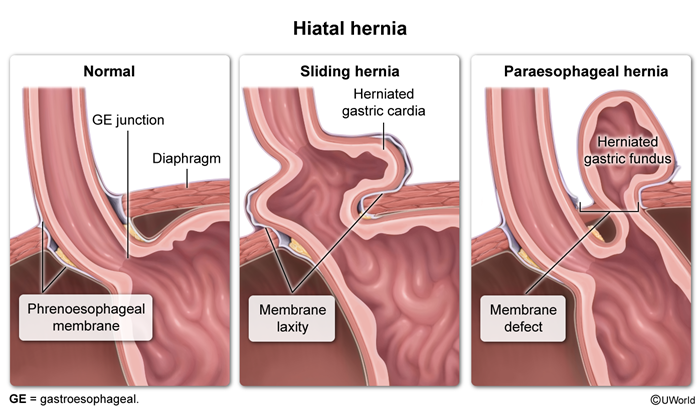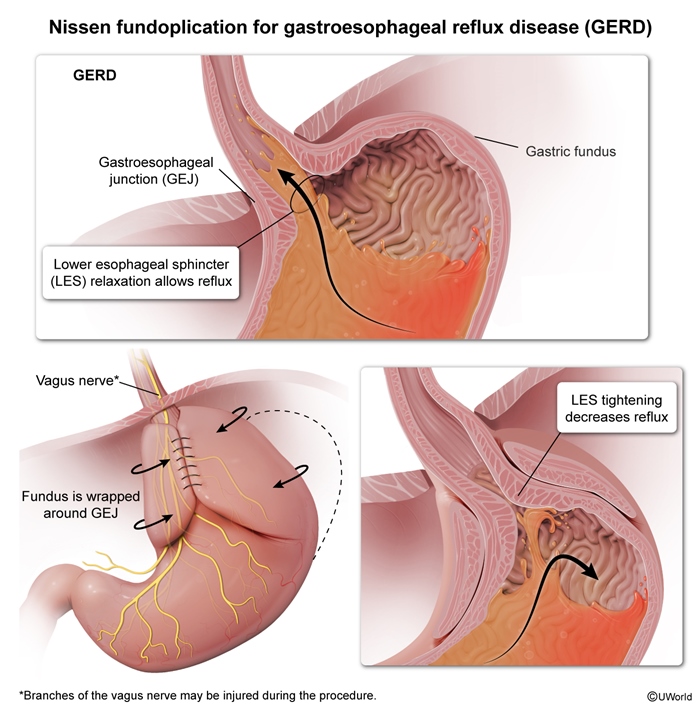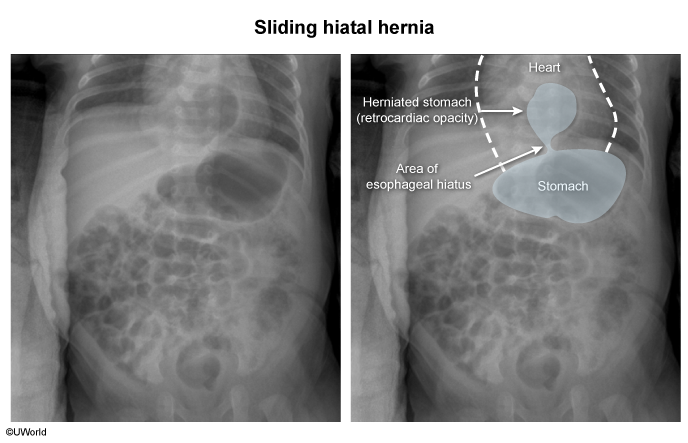Hiatal Hernias
Article Sections
Introduction
A hiatal hernia occurs when intraabdominal organs protrude through the diaphragm into the thoracic cavity (Figure 1). The most common type is a sliding hiatal hernia, which involves the gastroesophageal junction and proximal stomach slipping upward into the chest. Sliding hiatal hernias are usually asymptomatic but can cause reflux symptoms. The less common paraesophageal hiatal hernia refers to migration of the gastric fundus into the chest through a defect in the diaphragm. This can lead to symptoms including nausea, vomiting, dysphagia, and epigastric/chest pain. Diagnosis of hiatal hernia is confirmed with barium swallow study or upper endoscopy. Symptomatic sliding hernias are typically managed with anti-reflux medications, but paraesophageal hernias often require surgical repair.
Pathogenesis and risk factors
The diaphragm is a large muscle that separates the thoracic and abdominal cavities. It normally has a small opening (ie, esophageal hiatus) through which the esophagus passes before connecting to the stomach. The distal esophagus is anchored circumferentially to the diaphragm by the phrenoesophageal membrane, and the stomach is held in place by the gastrosplenic and gastrocolic ligaments. A hiatal hernia occurs when either laxity or a defect (hole) in the phrenoesophageal membrane allows for migration of the stomach into the thoracic cavity.
Continue Learning with UWorld
Get the full Hiatal Hernias article plus rich visuals, real-world cases, and in-depth insights from medical experts, all available through the UWorld Medical Library.
Figures


Images
